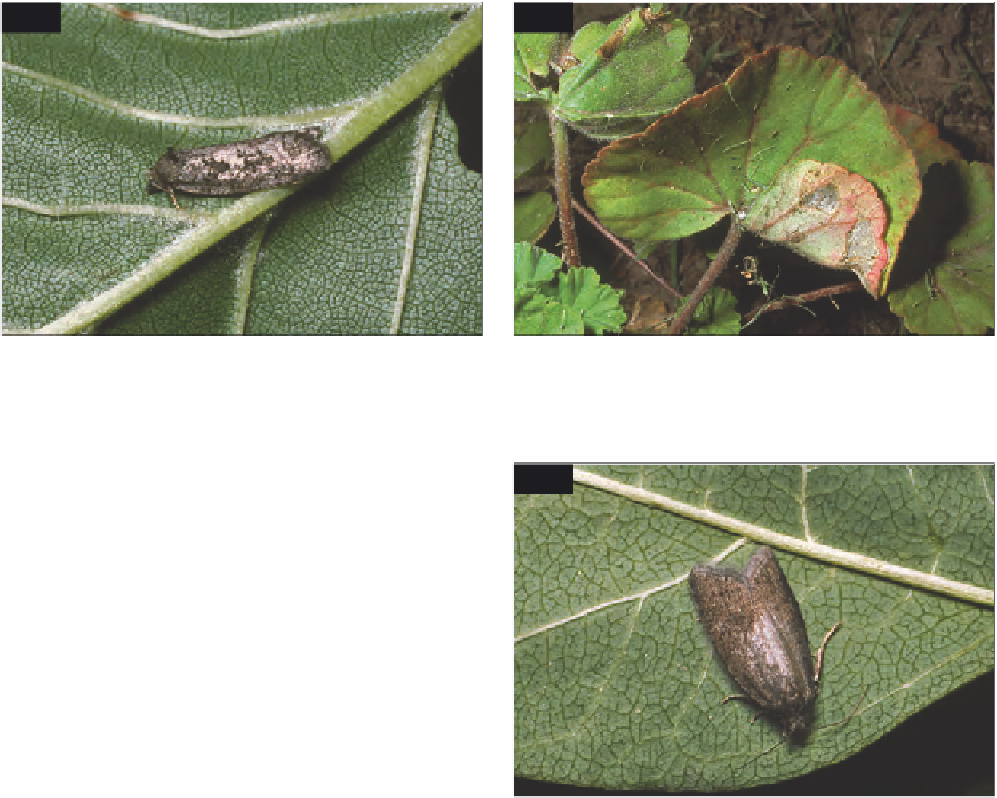Biology Reference
In-Depth Information
647
648
647
Allied shade moth (
Cnephasia incertana
).
648
Larval habitation of
Cnephasia stephensiana
on leaf of
Geranium
.
649
Cnephasia incertana
(Treitschke) (
647
)
Allied shade moth
Larvae of this generally distributed and common
species are polyphagous on herbaceous plants, and are
sometimes found on ornamentals, including
Chrysanthemum
,
Geranium
and
Saxifraga
, as well as
young conifers. They occur from early spring onwards,
pupating in late May or early June. Adults appear in
June and July. The larvae are similar to those of
Cnephasia asseclana
but usually darker and have no
anal comb; the adults of both species are very similar,
but the fore wings of
Cnephasia incertana
are slightly
narrower.
649
Adult of
Cnephasia stephensiana
.
Cnephasia longana
(Haworth)
larva
omnivorous leaf tier
This species occurs mainly in coastal and chalkland
sites, and is reported occasionally as a minor pest of
greenhouse and outdoor flowers. The larvae are
polyphagous but are most often associated with
Asteraceae, including
Aster
,
Chrysanthemum
and
Hypochoeris
; they attack the young shoots and flower
head, often feeding under a canopy of webbed-down
petals. Larvae are rather plump (up to 18 mm long) and
greenish grey or yellowish grey, with pale longitudinal
lines along the back and sides, and a light brown head,
prothoracic plate and anal plate. They occur from early
spring onwards, pupating in June. The whitish-ochreous
to brownish-ochreous adults (15-22 mm wingspan)
emerge in July.
=
Cnephasia stephensiana
(Doubleday) (
648-649
)
Larvae of this widely distributed species are
polyphagous on herbaceous plants, and are often pests
of cultivated plants in gardens and greenhouses,
especially Asteraceae. The larvae feed from April to
June, at first mining the leaves but later living in spun or
folded leaves beneath slight webs; flowers are also
attacked. Fully grown individuals are 15-18 mm long
and shiny grey or bluish grey to greenish grey, with
large, black pinacula, a brown or black head, a mainly
black prothoracic plate, black thoracic legs and a
blackish-brown anal plate; there is no anal comb. Adults
(18-22 mm wingspan) are mainly light grey, with
blackish-edged, brownish-grey markings; they occur in
July and August.

Search WWH ::

Custom Search